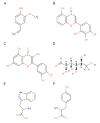"Green" nanotechnologies: synthesis of metal nanoparticles using plants
- PMID: 24772325
- PMCID: PMC3999464
"Green" nanotechnologies: synthesis of metal nanoparticles using plants
Abstract
While metal nanoparticles are being increasingly used in many sectors of the economy, there is growing interest in the biological and environmental safety of their production. The main methods for nanoparticle production are chemical and physical approaches that are often costly and potentially harmful to the environment. The present review is devoted to the possibility of metal nanoparticle synthesis using plant extracts. This approach has been actively pursued in recent years as an alternative, efficient, inexpensive, and environmentally safe method for producing nanoparticles with specified properties. This review provides a detailed analysis of the various factors affecting the morphology, size, and yield of metal nanoparticles. The main focus is on the role of the natural plant biomolecules involved in the bioreduction of metal salts during the nanoparticle synthesis. Examples of effective use of exogenous biomatrices (peptides, proteins, and viral particles) to obtain nanoparticles in plant extracts are discussed.
Keywords: biomatrices; bioreduction; metal nanoparticles; plant extracts; plant metabolites.
Figures





References
-
- Roco M.C.. Curr. Opin. Biotechnol. 2003;14:337–346. - PubMed
-
- Zhang L., Gu F.X., Chan J.M., Wang A.Z., Langer R.S., Farokhzad O.C.. Clin. Pharmacol. Ther. 2008;83:761–780. - PubMed
-
- Daniel M.C., Astruc D.. Chem. Rev. 2004;104:293–346. - PubMed
-
- Wong T.S., Schwaneberg U.. Curr. Opin. Biotechnol. 2003;14:590–596. - PubMed
-
- Preparation, characterization and applications. John Wiley., Fendler J.H., Nanoparticles and nanostructured films. 1998:463.
LinkOut - more resources
Full Text Sources
Other Literature Sources
